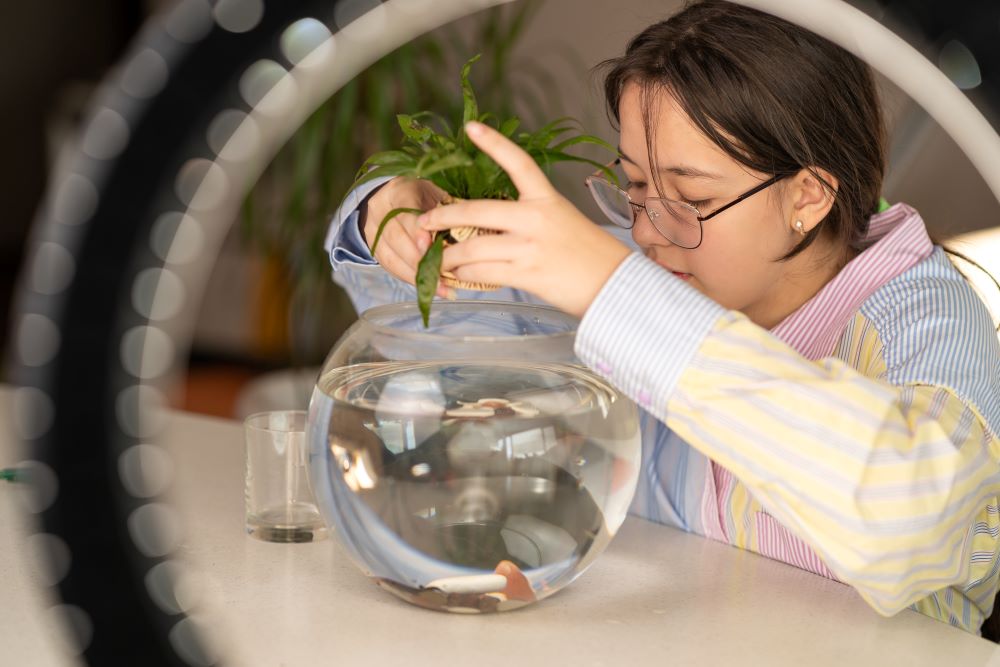This begs the question: Am I feeding my bettas the right way? Ideally, you want to be as particular about how much food they eat as you are about what they eat. That’s because underfeeding or overfeeding your bettas may lead to health complications, and you don’t want that.
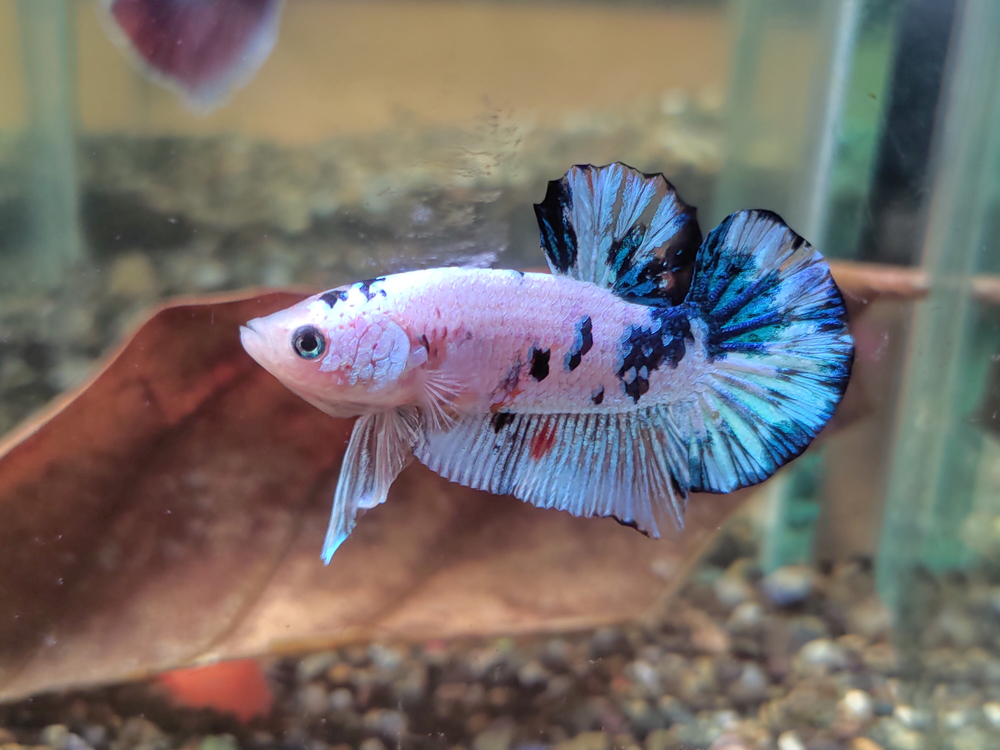
Nevertheless, in today’s guide, we will discuss betta’s diet and nutrition. So, whether you’re new to owning bettas or looking to give them the best possible care, this will help you understand their dietary requirements and create a consistent feeding schedule. Let’s get started!
Contents
Understanding Betta Fish Dietary Needs
When managing your betta fish’s nutrition, you should prioritize choosing dietary varieties that are high in protein. These varieties contain essential vitamins and nutrients that will help your betta fish grow and stay strong.
Check out these other top picks:
- Why Is My Betta Flaring at Nothing?
- How to Keep Betta Fish Warm Without a Heater
- How to Transfer Betta Fish from Cup to Tank
Protein Requirements for Betta Fish
Bettas are carnivorous by nature, which means that they mostly eat bugs and tiny animals in the wild. Therefore, your goal is to feed your bettas the best food to help them stay healthy.
Bettas require a high amount of protein, so you want to include protein-rich sources like live or frozen prey. Typical betta food items include:
- Brine shrimp
- Bloodworms
- Daphnia
Regarding optimal feeding strategy, you should give your betta fish 2-3 pellets or the same amount of live food twice daily.
Importance of a Varied Diet
You want to feed your bettas a varied diet since it helps prevent nutritional deficiencies and promote a robust immune system. Diversifying your betta’s diet beyond just pellets or flakes can provide the necessary nutrients and vitamins needed for maintaining their health. This variety can include:
- Frozen food: a small portion, as it’s nutrient-dense
- Freeze-dried food: occasionally, to add diversity
- Live food: ideally included regularly to stimulate natural hunting behavior and provide essential nutrients
When selecting food for bettas, I look for options that contribute to a balanced diet, reflecting their natural preferences and nutritional needs.
Types of Betta Fish Food
Choosing the right food for your betta fish is vital for keeping them healthy and happy. Betta fish food comes in different forms, including pellets, flakes, live food, and freeze-dried food.
For a well-rounded understanding, let’s discuss about each of the foods and what’s good and bad about each one.
Comparing Pellets, Flakes, and Live Foods
Pellets: These are specifically formulated for bettas. They sink slowly, allowing your betta to swim up and catch them—just like they would eat in the wild.
- Pros: Easy to measure, less likely to overfeed, often contain essential nutrients tailored for bettas.
- Cons: May expand in water and in the betta’s stomach, potentially causing bloating if overfed.
Flakes: Flake foods are a common choice for various fish species but may not often be ideal for bettas due to their surface-feeding preferences.
- Pros: Readily available and can be consumed by fish at different water levels.
- Cons: Difficult to portion, could dissolve and pollute water if uneaten.
Live Foods: Feeding live foods like brine shrimp or daphnia provides enrichment that can stimulate a betta’s hunting instincts.
- Pros: Highly palatable, mimic natural diet, encourage natural foraging behaviors.
- Cons: Risk of introducing parasites, more maintenance to store and keep fresh.
Pros and Cons of Freeze-Dried Foods
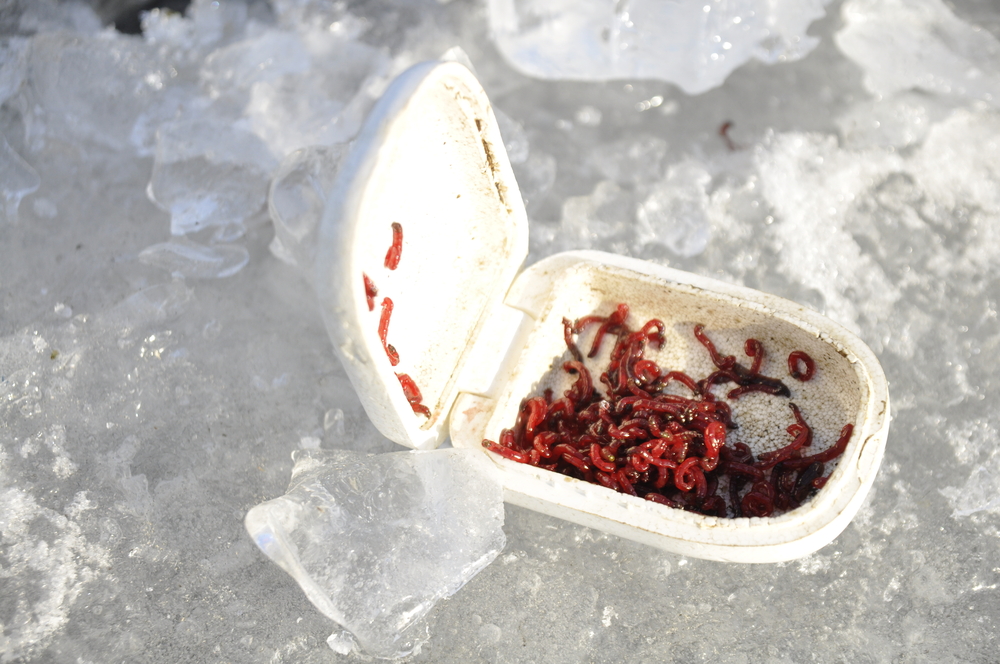
Freeze-dried foods, such as bloodworms or brine shrimp, offer a convenient way to feed protein-rich treats to your betta without the risks of live foods.
- Pros:
- Long shelf life
- Lower risk of disease compared to live or frozen foods.
- Preserves the nutrition and taste of live food.
- Cons:
- Must be rehydrated before feeding to avoid digestive issues.
- Often lack moisture compared to live or frozen foods, which is important for a betta’s digestion.
When selecting the best betta fish food, consider a mix of different dietary options. This accounts for a balanced intake of nutrients and keeps your betta enthusiastic about feeding times.
Feeding Your Betta Fish
For bettas, feeding the right amount and at optimal feeding frequencies is very important, as it accounts for their health and longevity.
The amount of food your betta needs depends on its kind and age. Generally, grownup bettas need about a pinch of food each day, about 1.8 grams, which you can break down into smaller meals. For example, you can give them 2-4 pellets per feeding session.
These pellets are small enough for their mouths so that they can eat them quickly. Watching your betta eat is the best way to know how much food is enough. They should be able to finish their food in about 5 minutes.
You also want to create a routine in your betta fish feeding frequency. A more effective schedule might involve offering betta pellets one to two times daily and alternating with varied foods on certain days to keep a balanced diet.
Give your bettas 2-3 pieces of live, frozen, or freeze-dried food to mimic their natural hunting and feeding patterns. Stick to a regular feeding schedule to keep your bettas in optimal condition.
Health Concerns Related to Feeding
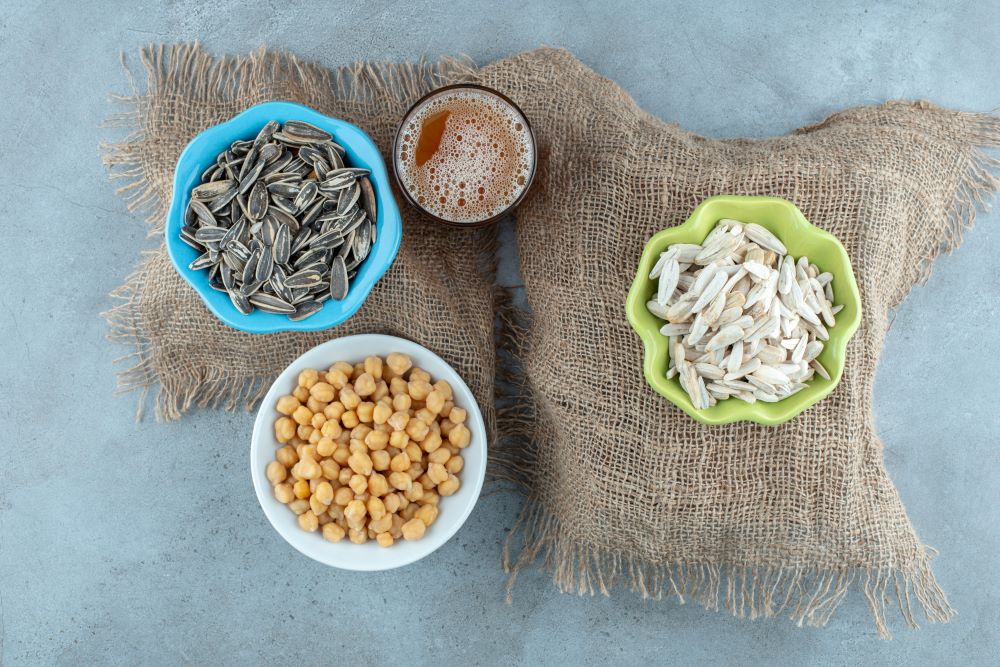
A balanced diet is highly important for maintaining the health of betta fish. Overfeeding and improper diet can lead to various health issues, including digestive problems and obesity, which in turn can lead to more serious diseases for your bettas.
Identifying and Preventing Overfeeding
Clear signs that you’re overfeeding your bettas is having uneaten food accumulating at the bottom of the tank and a noticeably swollen fish belly. This can lead to bloating and problems with their swim bladders.
To prevent this, stick to a strict feeding schedule; feeding your bettas twice a day, offering just the right amount of food that they can consume with two minutes. You can also opt for a once a week fasting day, as it aids digestion and prevent bloating.
Addressing Digestive Issues and Obesity
Sometimes, betta fish struggle with constipation. It can happen if they don’t get enough of the right foods or eat too many freeze-dried foods.
Their bellies might look bigger, and they might not past waste often. To help them feel better, stop feeding them dried food for a little while. Try giving them yummy foods with lots of water inside, like live or frozen snacks.
To help them feel better, opt for a well-balanced diet with variety—such as live or frozen foods high in moisture. If obesity appears to be an issue, you should review the calorie content of the different food. That way, you can adjust their diet to make sure it’s appropriate for the fish’s age and activity level.
Special Considerations for Feeding
You want to tailor your betta’s diet to their age and the prevailing water conditions. Feeding your bettas the right way will help them get the nutrients they need while also considering their unique environmental needs.
Feeding Juvenile Bettas vs Adult Bettas
Juvenile Bettas:
- Frequency: You should feed your juvenile bettas slightly more often than adults since they grow rapidly. You want to feed them small amounts 3-4 times daily.
- Type of food: High-protein food such as mosquito larvae is ideal for young bettas, promoting healthy development.
Adult Bettas:
- Frequency: Adult bettas require feeding only once or twice a day, with careful monitoring to prevent overfeeding and obesity.
- Type of food: A variety of high-quality betta pellets and live foods, including mosquito larvae, should be integrated into their diet for optimal health.
Seasonal Adjustments to Feeding
- Water Temperature: The metabolic rate of bettas is influenced by water temperature. During colder months, I might reduce the amount of food since their metabolism slows down.
- Adjusting Portions: If the water temperature dips significantly, it’s crucial to adjust the portions accordingly to avoid health issues related to overfeeding.
Selecting High-Quality Betta Food Brands
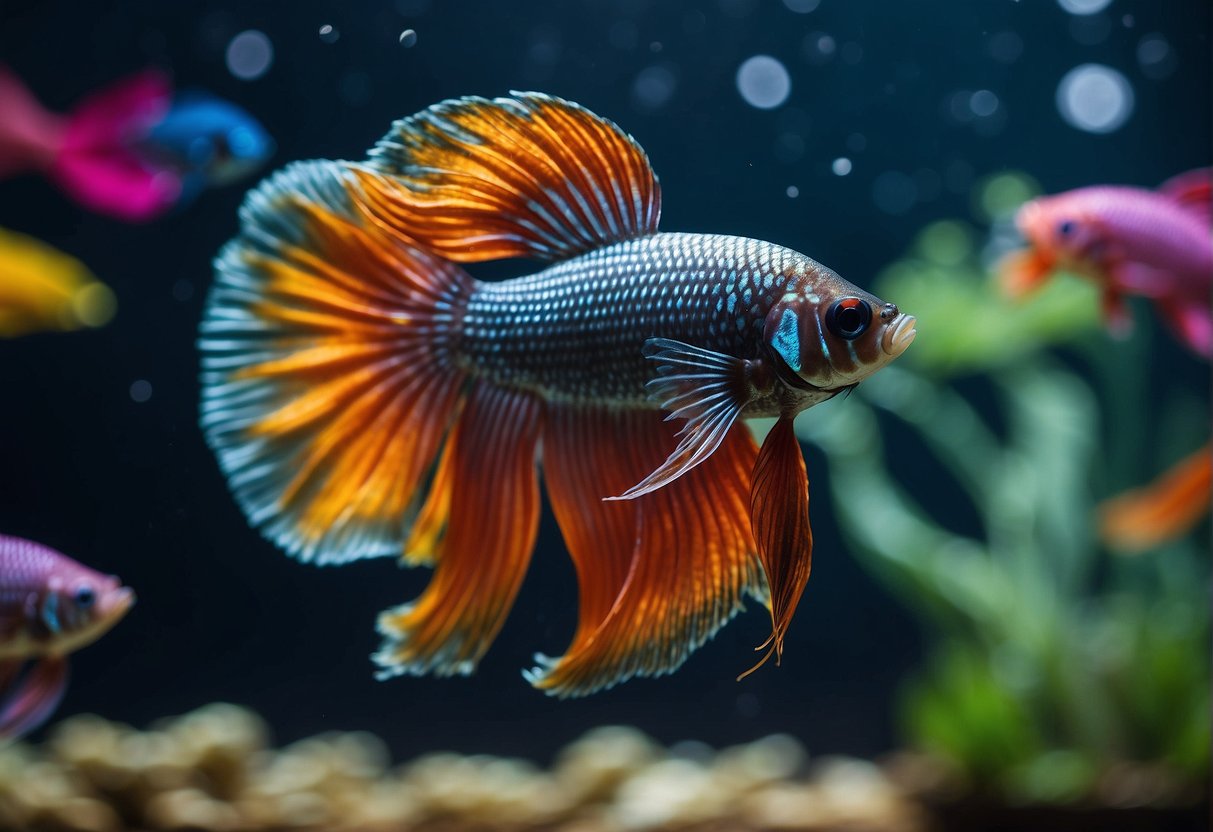
When selecting food for your betta fish, the quality of the brand is ultimate. Look for brands with quality fillers. Hikari Betta Bio-Gold is one of the most trusted brands out there. It’s specifically tailored for bettas, containing premium ingredients that help maintain the fish’s vibrant colors and support their health.
Also, consider the form of the food. While many betta owners opt for flakes, pellets are preferable because you can control the serving portion and reduce water contamination easily. For example, Aqueon Betta Food pellets are made to float. This is perfect because it encourages bettas’ natural surface-feeding behavior and makes overfeeding less likely.
Another trusted brand you can go for is Tetra Bettamin. It offers a blend of color-enhancing ingredients, which are important to bring out the natural beauty of betta fish without compromising nutritional value. When it comes to picking the best for your betta, make sure you see these qualities in a brand:
- Protein Content: High-quality animal proteins like krill should dominate the ingredient list.
- Form: Preferably pellets for easier portion control.
- Brand Reputation: Established brands with positive reviews from betta owners.
- Specialty: Formulas specific to betta dietary needs.
Alternative Betta Food Options
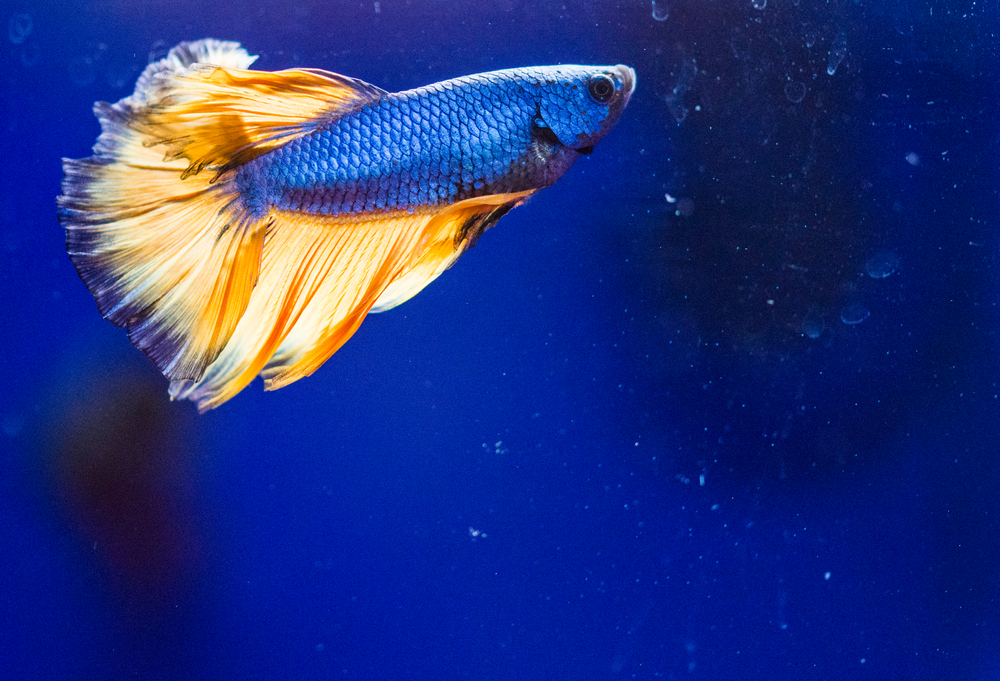
In providing a nutritious diet for betta fish, I always consider alternative food options that offer variety beyond traditional pellets and flakes. Let’s explore foods that may not be mainstream choices but can contribute to a betta’s well-being.
Using Non-Traditional Foods
It’s good to give your betta fish more than just one kind of food. A great option is to include both live and frozen foods. Fruit flies are a great choice because they’re packed with protein. They are also tiny and can even be cultivated at home.
Live worms, like live black worms, are another great food option. Bettas are huge fans and they offer a good workout as they hunt. If you’re big on practicality and safety, frozen bloodworms and frozen insects are your go-to options. They provide the much-needed protein without the risk of parasites common in live foods.
Homemade Betta Food Recipes
If homemade betta food is your style, consider simple recipes that you can mix and store conveniently. You can combine freeze-dried tubifex worms with a small portion of goldfish food to enrich the mixture with proper nutrients. However, due to their rich nutritional content, it’s important to offer these in moderation.
Conclusion
Feeding your bettas the right way is one way to ensure that they grow and live healthily. In this light, you want to prioritize what you feed and how often you feed your bettas. Only through the right food will your bettas get the nutrients they need to grow and stay healthy.
Likewise, overfeeding or underfeeding your bettas can make them sick and dirty their tank. All-in-all, taking care of your bettas becomes a much easier and much more rewarding task once you understand all these well enough.
Frequently Asked Questions
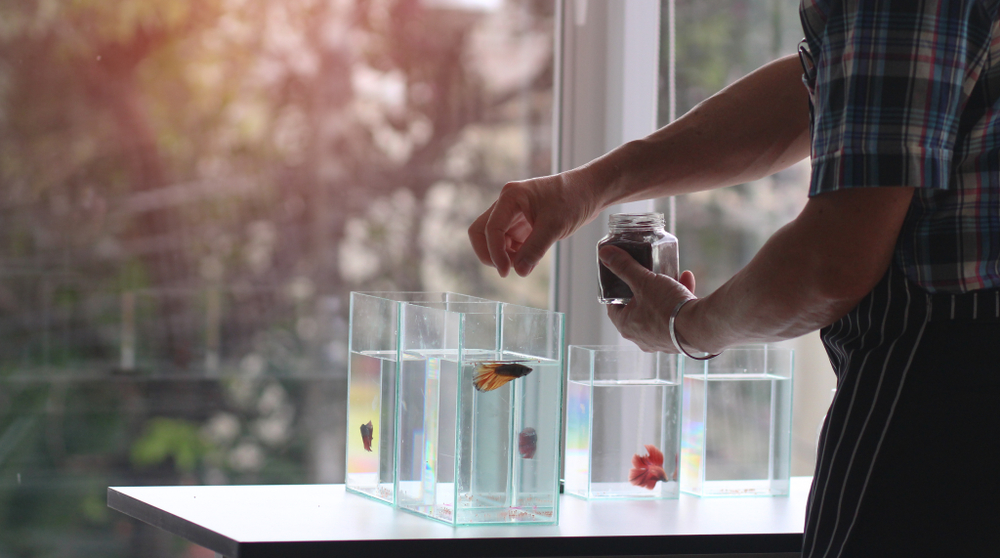
Get ready to discover some cool facts about feeding your betta fish. Here, we’ll address some common questions regarding the appropriate feeding of your betta fish, making sure you have precise guidelines to maintain their healthy living.
How can I tell if my betta fish is getting enough food?
Watch your betta while it eats. How much or how little it consumes within two minutes will tell you if they need less or more food.
What does an overfed betta look like?
An overfed betta fish might look bloated or swollen and have trouble swimming or moving around in the tank. Its belly might also be white or cloudy.
How long can betta fish go without food?
Betta fish can stay for many days without food, depending on their age and health. Wild bettas can survive up to 14 days without food, while domestic aquarium bettas can live from five to 10 days.
What does a healthy betta fish look like?
A healthy betta fish has clear, bright eyes and a vibrant color. Its fins and tail should be full and flowing. It should also be able to swim around the tank without any difficulty.
Can you feed betta fish bloodworms, and if so, how frequently?
Yes, you can feed your betta fish bloodworms. Offer bloodworms as a treat once or twice a week to provide variety, but make sure it’s a balanced diet with proper nutrition.
Are there specific feeding guidelines I should follow for betta fish?
Indeed, there are feeding guidelines. For optimal health, consistently feed high-quality pellets or flakes and supplement them with live or frozen food like brine shrimp. Observe your betta’s activity and adjust feeding accordingly.

Ian Sterling, founder of Fishlab.com, began his aquarium journey over 30 years ago, driven by a deep fascination for fish and their diverse personalities. His website, Fishlab.com, is dedicated to making fishkeeping accessible and enjoyable, offering beginner-friendly guidance, expert insights, and a community for aquarists to connect and share experiences.


